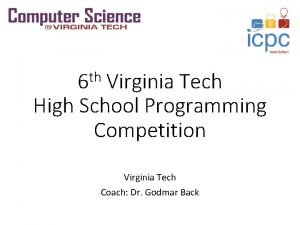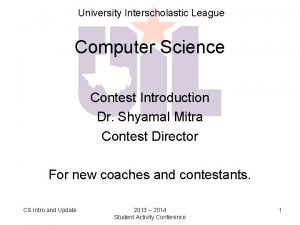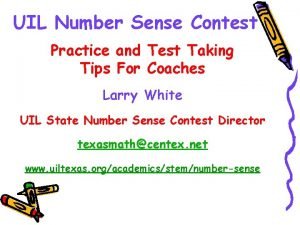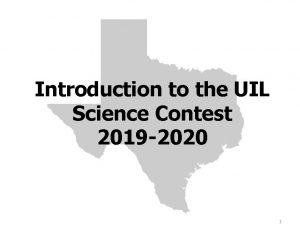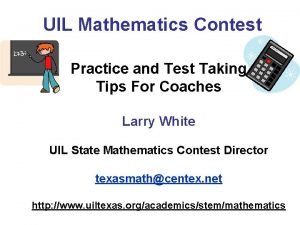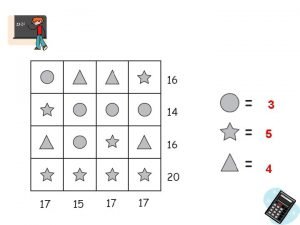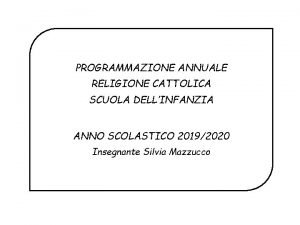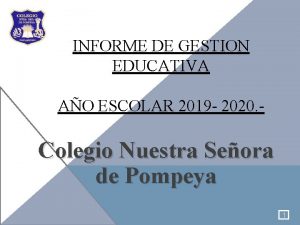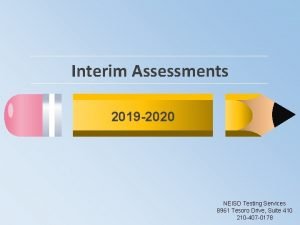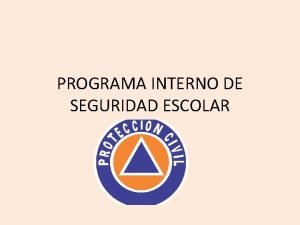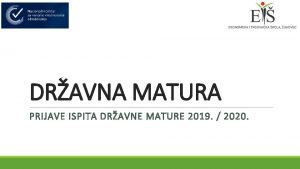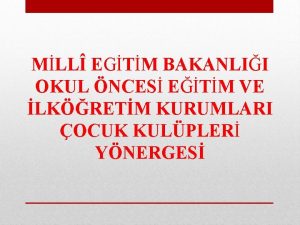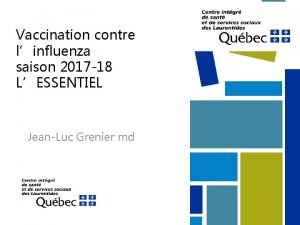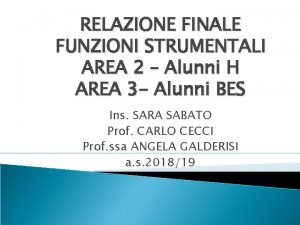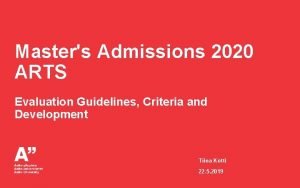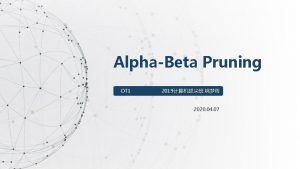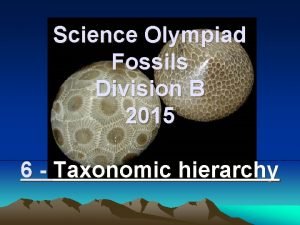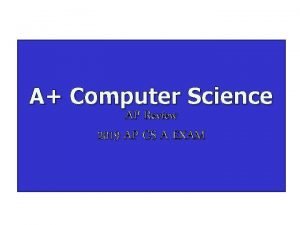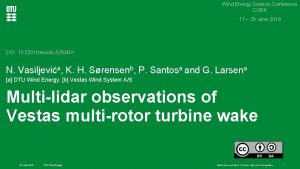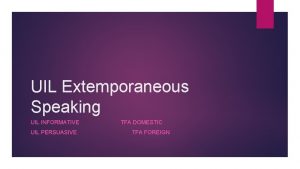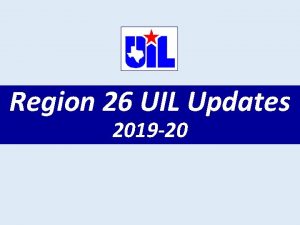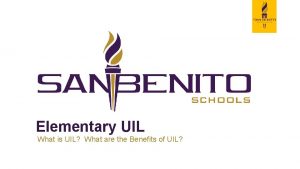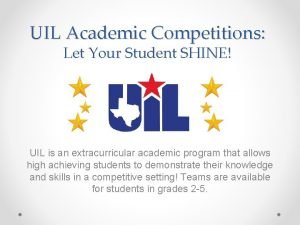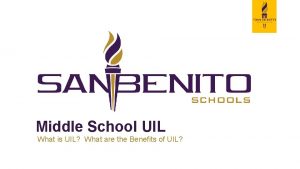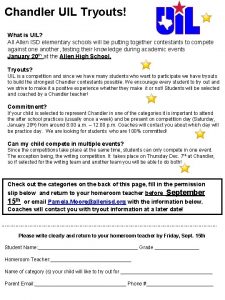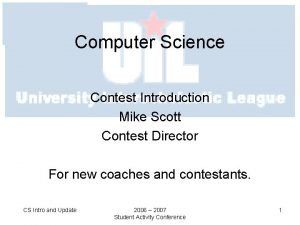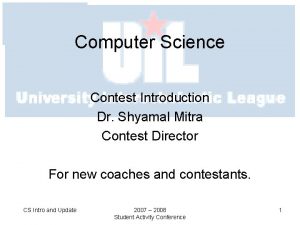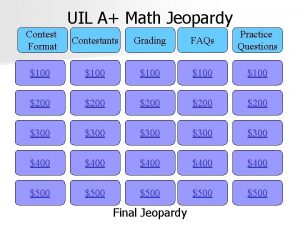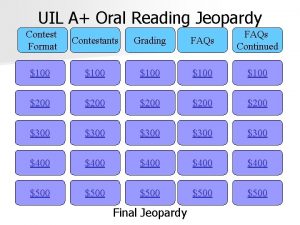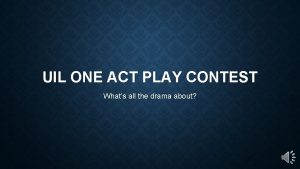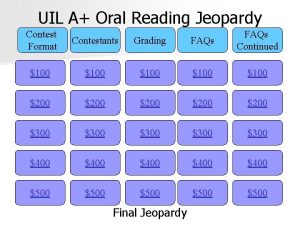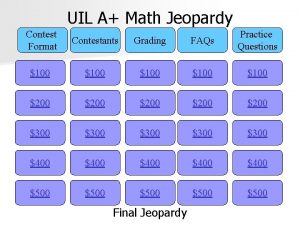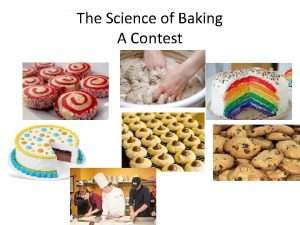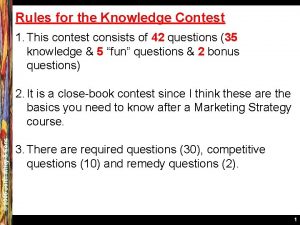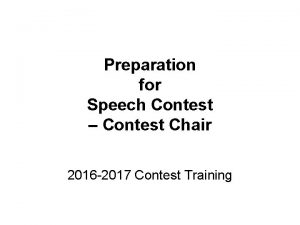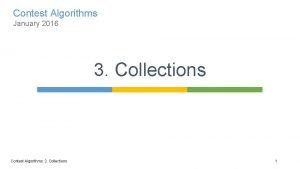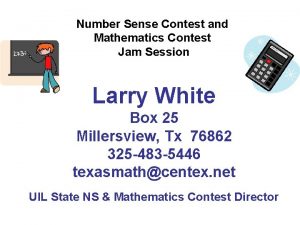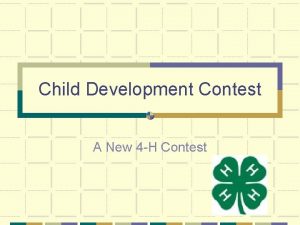Introduction to the UIL Science Contest 2019 2020








































- Slides: 40

Introduction to the UIL Science Contest 2019 -2020 1

U Science Directors • Dr. Michelle Mc. Gehee Biology • Dr. Brian Anderson Chemistry • Dr. David Bixler Physics 2

Purpose of UIL Exams • to challenge students in the basic fundamental principles of science • to promote learning in biology, chemistry, and physics • to foster a sense of enthusiasm about advanced topics and courses in the sciences • to help prepare students for the rigor of college level courses 3

The Science Contest • Biology, Chemistry & Physics are all combined on one exam, with awards given for each subject and for overall score. • The exam is both an individual and a team competition. • The contest covers a broad base of knowledge, and models STEM degree requirements at most Universities. 4

Contest Structure • 60 Multiple Choice Questions, which are divided into 20 of each topic Biology, Chemistry & Physics. • Contestants are given 6 pts. for a correct answer, 0 pts. for unanswered questions, and lose 2 pts. for incorrect answers. • The best possible answer is the correct answer. 5

A Few Details… • At the state competition only, there is no limit on the number of answer choices given on a question, e. g. A through J, not just up to five answer options A through E. • There is no restriction that numeric wrong answers must differ by 5% • This will allow for more realistic p. H problems in chemistry and will better model actual college-level exams. 6

Academic Meets 2020 • Invitational Meets (practice - not governed by UIL) A: Jan 1 – Feb 9? B: Feb 15 – Mar 16? • District Meet : Mar 23 – 28 • Regional Meet: Apr 17 – 18 • State Meet: April 30 – May 2 7

Advancement/Qualification • • Competitions are separated by division (1 A-6 A) • Advances to the next level: Each HS may enter 6 contestants at their district meet, where a minimum of 3 contestants constitutes a team. • 1 st, 2 nd & 3 rd place overall scorers • Top scorer in each subject area • Top team by combined score* • One alternate in each category *second place teams are eligible for possible advancement as a wildcard team 8

Things to keep in mind … • The contest is hard! • Top scores at the State Contest will be nearly perfect in each subject. • There needs to be a clear cut winner and this will require a selection of hard questions on the contest. • All schools divisions 1 A – 6 A compete with the same contest, but the scores are only compared with schools in the same division. • Do not be discouraged: there are benefits for all of the effort spent in preparing for the contest… 9

Some Contest Rules • Contestants have up to 2 hours, but must remain for at least 30 minutes. • You may use additional scratch paper provided by the contest director. • Simple Scientific Calculators – Casio FX-260 Solar – Sharp EL-501 X – TI-30 Xa – TI-30 X II or TI-30 X IIs 10

Biology Texts Pearson’s Biology, 10 th or 11 th edition, Campbell, et. al. 11

Biology Texts Mac. Millan’s Life, 11 th edition, Sadava, et. al. 12

Online Biology Resources • Learn Genetics University of Utah http: //learn. genetics. utah. edu/ • Paul Anderson, Bozeman Science http: //www. bozemanscience. com/about/ • Centers for Disease Control and Prevention https: //www. cdc. gov/ • World Health Organization http: //www. who. int/ 13

Chemistry Texts Chemistry by Whitten, Davis, Peck & Stanley 14

Chemistry Texts Chemical Principles by Zumdahl (& Decoste) 5 th, 6 th, and 7 th editions 15

Chemistry Texts Chemistry: A Molecular Approach by Tro 16

Recommended Online Chemistry Resources: University of Texas “gchem” site: https: //gchem. cm. utexas. edu/ Open. Stax College (Rice) https: //openstaxcollege. org/textbooks/che mistry The chemistry department at UT has developed a bare-bones online general chemistry e. Book web site. They also use the Open. Stax e. Book. For now, both are open and free. 17

Introductory Physics Texts Conceptual Physical Science by Hewitt Conceptual Physics by Hewitt 18

College Physics Texts (algebra/trigonometry) Physics by Giancoli College Physics by Serway & Vuille College Physics by Young 19

University Physics Texts (Calculus) Fundamentals of Physics by Halliday, Resnick, and Walker University Physics by Young and Freedman Physics for Scientists and Engineers by Serway and Jewett 20

Advanced Physics Texts The Feynman Lectures on Physics by Feynman, Leighton & Sands 21

Physics Online Resources Open. Stax Physics Text https: //openstaxcollege. org/tex tbooks/college-physics Com. Padre Physlet Physics: http: //www. compadre. org/physlets/ Com. Padre Interactive Video Vignettes: http: //www. compadre. org/ivv/ 22

Astronomy Texts Foundations of Astronomy by Seeds and Backman 21 st Century Astronomy by Kay and Palen

Physics Directed Study Text How to Teach Quantum Physics to Your Dog by Chad Orzel Not in C&CR, but is posted on UIL site.

FAQs on Texts • • • Do I need to get these exact texts? Does it need to be the same edition? Does the text matter? What about other texts? Options: • Half-price books / Online book sellers • Interlibrary loan 25

UIL Online Resources • http: //www. uiltexas. org/academics – UIL Academics home page • go to STEM > SCIENCE – Information from the Contest Directors will be posted here. – The new Physics directed study information is posted here. 26

Some Contest Strategies • Watch units! • Make diagrams with labels • Look for order of magnitude answers • Work backwards • Problem identification… Quick/Easy, Moderate or Hard • Use these identifiers to work on speed • Recognize when to skip or when to come back later 27

Coaches/Team Suggestions • Goal setting for student morale is very, very important! • Have students solve old contests UIL or TMSCA exams & help out other students. • Practice contests as posted on UIL invitational meet site or attend TMSCA contests. • If possible coordinate with other teachers to arrange for help when needed. • Positive reinforcement & food are good motivators. 28

Specific Topics Biology Chemistry Physics 29

Main Topics in Biology 1. Structure and Function 2. Cellular and Acellular Replication 3. Energy Transformations 4. Gene Expression 5. Genetics and Inheritance 6. Evolution 7. Origin and Diversity of Life 8. Ecology and the Environment 9. Basic Human Anatomy and Physiology 10. Diseases 30

Three Levels of Questions 1. Knowledge and Comprehension: Advanced recall and identification of subject matter. 2. Application and Analysis: Demonstration of quantitative reasoning using and generating graphs and data. 3. Synthesis and Evaluation: Using information and prior content knowledge to formulate conclusions and generate hypotheses. 31

Biology Contest Structure • Participants should expect questions from all topics on all exams. • Approximately 75% of questions from levels 1 and 2; 25% from level 3. • The relative level of difficulty will increase with each contest. 32

Topics in Chemistry 1. Fundamentals 7. Thermodynamics 2. Stoichiometry 8. Physical Equilibria 3. Atomic Theory 9. Chemical Equilibria 4. Chemical Bonding and Structure 10. Acids and Bases 5. Gases 6. Liquids and Solids 11. Solubility Equilibria 12. Electrochemistry 13. Chemical Kinetics 33

Questions in Chemistry Each exam will have at least one question from each of the 13 topic areas. Invitationals A & B Generally these two exams will have the easiest types of questions. Very straightforward information and calculations. District The questions will go a little deeper into the subject matter. Some problems will be complex in nature but overall, this is a notch down in difficulty from the regional and state exams. Some problems present a situation where the pathway to the answer is not immediately apparent. Regional and State Problems will be more complex than on previous exams. More quantitative problems, with multi-step calculations required to get to the answer. Equilibrium problems will require more algebra to solve them. Some problems are designed to take more time. Sometimes the approach to solving the problem is not obvious, and some critical thinking is involved before the problem can be solved. 34

The 20 questions in Physics: • There will be 3 directed study questions from “How to Teach Quantum Physics to Your Dog” by Orzel. • Variety of question types: conceptual, symbolic, and numeric questions. Most will be numerical. • There is a range of difficulty on each contest and over the contest season. • Problems that require vector operations expressed in unit vector notation & calculus will be included on the state contest to help better differentiate the scores for the top students.

“How to Teach Quantum Physics to Your Dog” Directed Study Questions • Invitational A – chapters 1 -3 • Invitational B – chapters 1 -3 • District – chapters 4 -5 • Regional – chapters 6 -7 • State – chapters 8 -10

• Physics Questions P 1 – P 3 will always be from the reading material. This year that is from “How to Teach Quantum Physics to Your Dog” by Chad Orzel. • Physics Question P 4 will always be from the field of Astronomy. • Physics Question P 5 will always be about Measurement/Dimensional Analysis/Significant Figures/Order of Magnitude. • Physics Question P 6 will always be about Uniformly Accelerated Motion. • Physics Question P 7 will always be about Forces. • Physics Question P 8 will always be about Work/Energy/Power/Momentum. • Physics Question P 9 will always be about Circular and Rotational Motion/Equilibrium.

• Physics Question P 10 will always be about Waves/Sound/ Harmonic Motion. • Physics Question P 11 will always be about Fluid Statics and Dynamics/ Thermodynamics. • Physics Question P 12 will always be about DC Circuits/Resistors/Capacitors. • Physics Question P 13 will always be about Electric Fields and Forces/Electric Potential/Gauss’ Law. • Physics Question P 14 will always be about Magnetic Fields and Forces/Magnetic Materials/Ampere’s Law. • Physics Question P 15 will always be about Faraday’s Law/Induction/EM Oscillation and Waves/AC Circuits. • Physics Question P 16 will always be about Geometric Optics/Wave Optics.

• Physics Question P 17 will always be about Modern Physics/Quantum Physics. • Physics Question P 18 will always be about Nuclear Physics/Particle Physics. • Physics Question P 19 will always be a wildcard question from the topics traditionally covered in a Physics 1 course. That is from the topics covered in questions P 5 -P 11. • Physics Question P 20 will always be a wildcard question from the topics traditionally covered in a Physics 2 course. That is from the topics covered in questions P 12 -P 18.

end of presentation 40
 2018 virginia tech high school programming contest
2018 virginia tech high school programming contest Uil computer science programming problems
Uil computer science programming problems Tmsca number sense practice tests
Tmsca number sense practice tests Uil science
Uil science Uil science practice tests
Uil science practice tests Tmsca science practice tests
Tmsca science practice tests My favourite subject worksheet
My favourite subject worksheet Science fusion think central
Science fusion think central Programmazione religione scuola infanzia 2019-2020
Programmazione religione scuola infanzia 2019-2020 Informe de gestion escolar 2019-2020
Informe de gestion escolar 2019-2020 Interim assessment tea
Interim assessment tea Programa interno de seguridad escolar
Programa interno de seguridad escolar Carnet huso prijava
Carnet huso prijava çoçuk kulübü öğretmen ücreti 2019-2020
çoçuk kulübü öğretmen ücreti 2019-2020 Influenza vaccine dosage chart 2019-2020
Influenza vaccine dosage chart 2019-2020 Relazione funzione strumentale area 2 2019/2020
Relazione funzione strumentale area 2 2019/2020 Admission guide 2019-2020
Admission guide 2019-2020 Minimax 2019 2020
Minimax 2019 2020 Science olympiad fossils
Science olympiad fossils 2019 apcs frq
2019 apcs frq Wind energy science conference
Wind energy science conference Hình ảnh bộ gõ cơ thể búng tay
Hình ảnh bộ gõ cơ thể búng tay Lp html
Lp html Bổ thể
Bổ thể Tỉ lệ cơ thể trẻ em
Tỉ lệ cơ thể trẻ em Chó sói
Chó sói Tư thế worm breton là gì
Tư thế worm breton là gì Chúa yêu trần thế
Chúa yêu trần thế Các môn thể thao bắt đầu bằng tiếng chạy
Các môn thể thao bắt đầu bằng tiếng chạy Thế nào là hệ số cao nhất
Thế nào là hệ số cao nhất Các châu lục và đại dương trên thế giới
Các châu lục và đại dương trên thế giới Cong thức tính động năng
Cong thức tính động năng Trời xanh đây là của chúng ta thể thơ
Trời xanh đây là của chúng ta thể thơ Mật thư anh em như thể tay chân
Mật thư anh em như thể tay chân 101012 bằng
101012 bằng độ dài liên kết
độ dài liên kết Các châu lục và đại dương trên thế giới
Các châu lục và đại dương trên thế giới Thể thơ truyền thống
Thể thơ truyền thống Quá trình desamine hóa có thể tạo ra
Quá trình desamine hóa có thể tạo ra Một số thể thơ truyền thống
Một số thể thơ truyền thống Cái miệng xinh xinh thế chỉ nói điều hay thôi
Cái miệng xinh xinh thế chỉ nói điều hay thôi
